In the pulley system shown in figure. P and Q are fixed pulleys while A, B and C are movable pulleys each of mass 1kg. The strings are vertical and inextensible. Find the tension in the string and acceleration of frictionless pulleys A, B and C

A single string whose ends are tied to centres of A and B, passes over all the pulleys, so tension at each point of string is same equal to T. Weight of each pulley A, B and C is
mg = 1 g Newton.
Let yA,yBandyC be the distances of centres of pulleys A, B and C from fixed pulleys at any time t. Following the string starting from end A and reaching upto end B, we have
(yB−yA)+yB+2yA+yC+yC−yB=L= constant
i.e.,yA+yB+2yC=L= contant
DIfferentitating twice with respect to t , we get
d2yAdt2+d2yBdt2+2d2yCdt2=0
i.e., aA+aB+2aC=0 ...... (1)
where aA,aBandaC are acceleration of pulley A,B,C respectively .
Now equations of motion of pulleys A,B and C are
mg+T−2T=maA⇒mg−T=maA............ (2)
mg+T−2T=maB⇒mg−T=maB......... (3) and
mg−2T=maC
From (2) and (3) it is obvious that
and aA=aB=(g−TM)............ (5) and from (4) , aC=g−2Tm............. (6)
susbtituting aA,aBandaC in (1) , we get
(g−Tm)+(g−Tm)+2(g−2Tm)=0
4g−6Tm=0⇒T=23mg=23×1×9.8=6.5N
∴aA=aB=(g−Tm)=9.8−6.51=3.3m/s2
From (1) , ac=−aA=−3.3m/s2
Topper's Solved these Questions
- LAWS OF MOTIONBOOK - AAKASH SERIESCHAPTER - LAWS OF MOTIONEXERCISE - LONG ANSWER TYPE QUESTIONS
4 Videos
- LAWS OF MOTIONBOOK - AAKASH SERIESCHAPTER - LAWS OF MOTIONEXERCISE - SHORT ANSWER TYPE QUESTION
5 Videos
- GEOMETRICAL OPTICSBOOK - AAKASH SERIESCHAPTER - GEOMETRICAL OPTICSEXERCISE - ADDITIONAL PRACTICE EXERCISE (LEVEL-II PRACTICE SHEET (ADVANCED) INTEGER TYPE QUESTIONS)
6 Videos
- LOGIC GATESBOOK - AAKASH SERIESCHAPTER - LOGIC GATESEXERCISE - Exercise (Very Short Answer)
16 Videos
Similar Questions
In the pulley system shown the movable pulleys A,B and C have mass m each, D and E are fixed pulleys. The strings are vertical light and inextensible Then
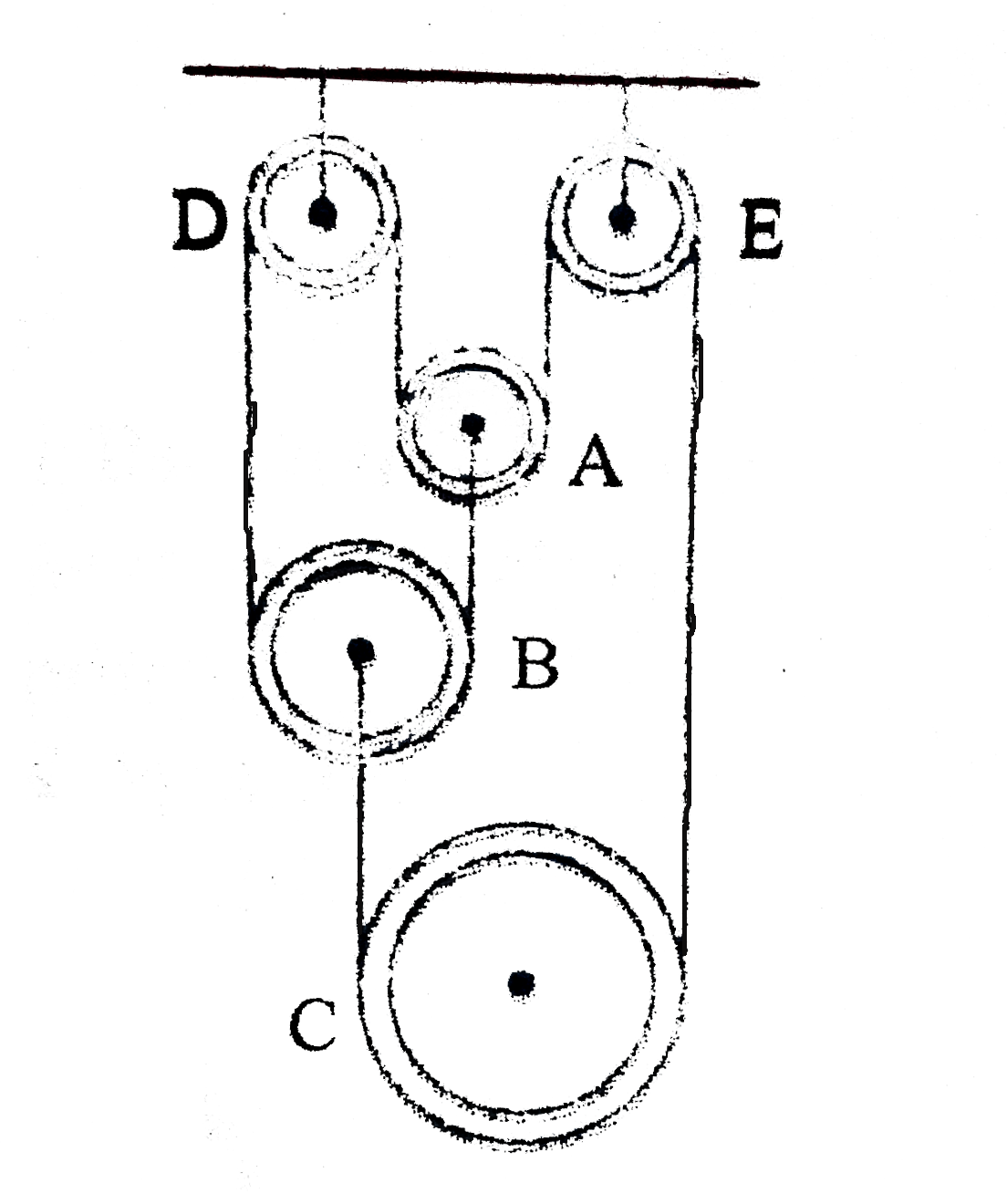 .
.
View SolutionIn the pulley system shown in figure the movable pulleys A,B and C are of mass 1 kg each D and E are fixed pulleys are light and inexensible.
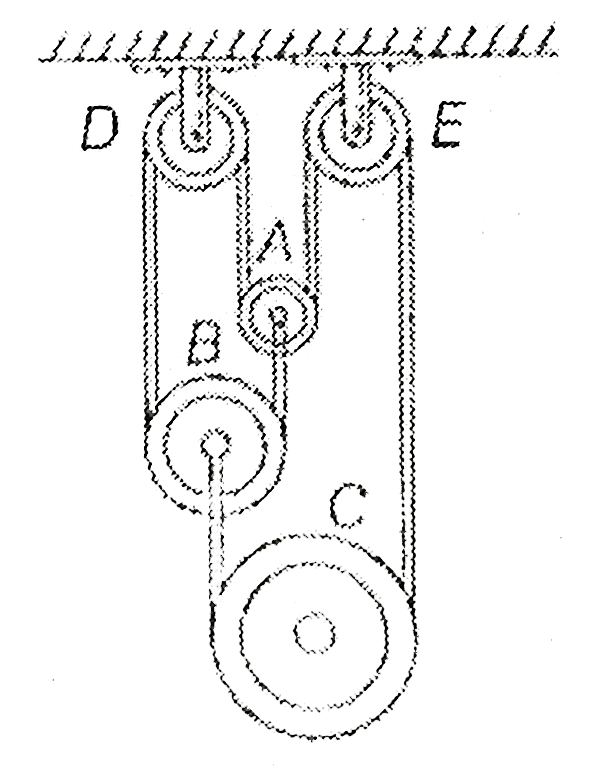
Choose the correct alternative (s).
View Solution
Knowledge Check
In the pulley system shown the movable pulleys A,B and C have mass m each, D and E are fixed pulleys. The strings are vertical light and inextensible Then
 .Athe tension throughout the string is the same and equals T=2mg3 .Bpulleys A and B have acceleration g3 each in downward direaction and pulley C has acceleration g3 in wpward direaction .Cpulleys A,B and C all have accleration g3 in downward direction .Dpulley A has acceleration g3 in downward direction and pulleys B and C have acceleration g3 each in upward direction .
.Athe tension throughout the string is the same and equals T=2mg3 .Bpulleys A and B have acceleration g3 each in downward direaction and pulley C has acceleration g3 in wpward direaction .Cpulleys A,B and C all have accleration g3 in downward direction .Dpulley A has acceleration g3 in downward direction and pulleys B and C have acceleration g3 each in upward direction .In the pulley system shown in fifure the movable pullet=ys A,B and C are of mass 1 kg each D and E are fixed pulleys are light and inexensible.

Choose the correct alternative (s).ATension in the string is 6.5 NBAcceleration of pulley A is g/3 downwardCAcceleration of pulley B is g.\6 upwardDAcceleration of pulley C is g/3 upwardIn the arrangement shown, the pulleys are smooth and the strings are inextensible. The acceleration of block B is :
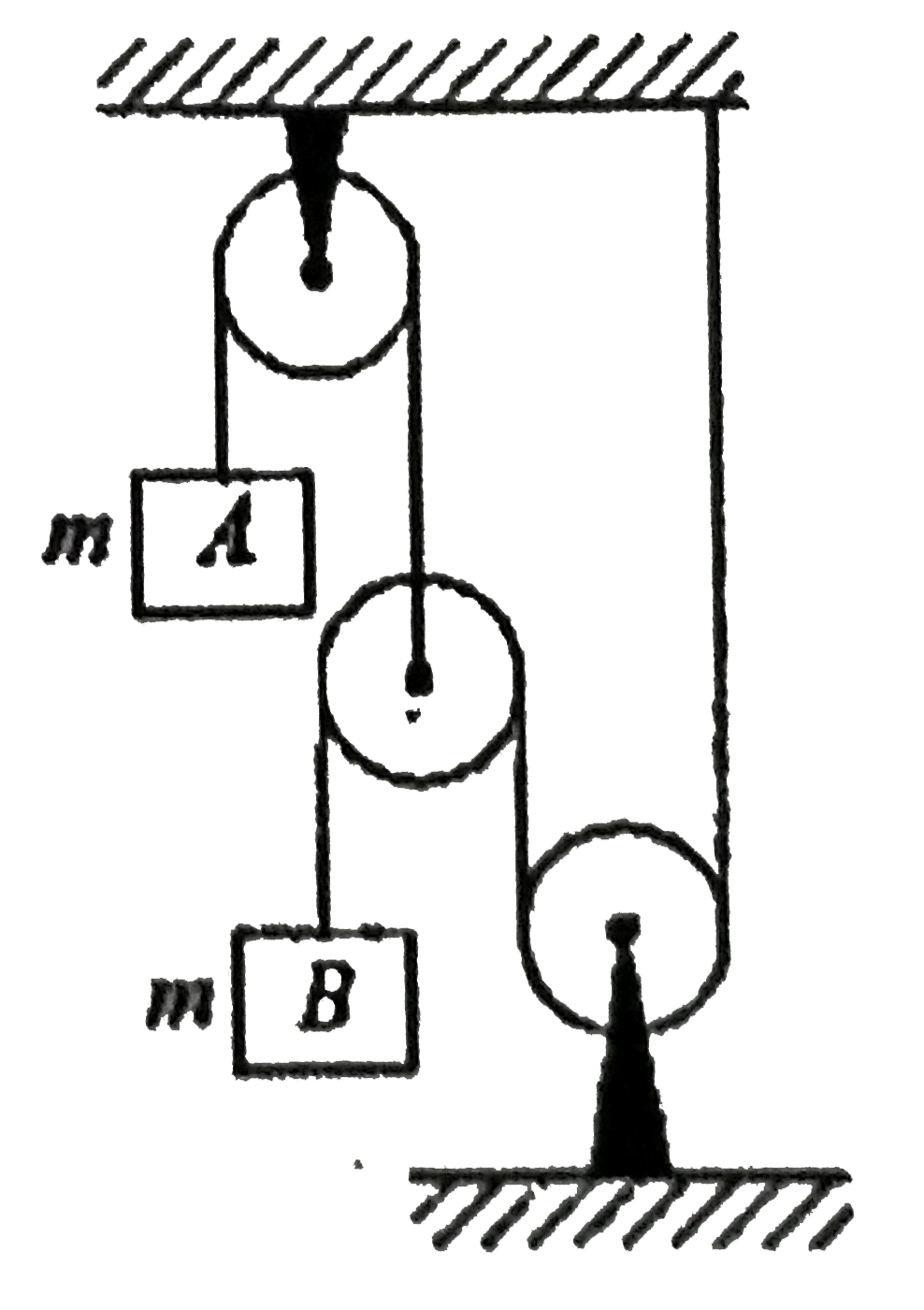 Ag/5B5g/5C2g/5D2g/3
Ag/5B5g/5C2g/5D2g/3
All pulleys are massless The string is light and inextensible Find acceleration of centre of pulley 'p'∈m/s2
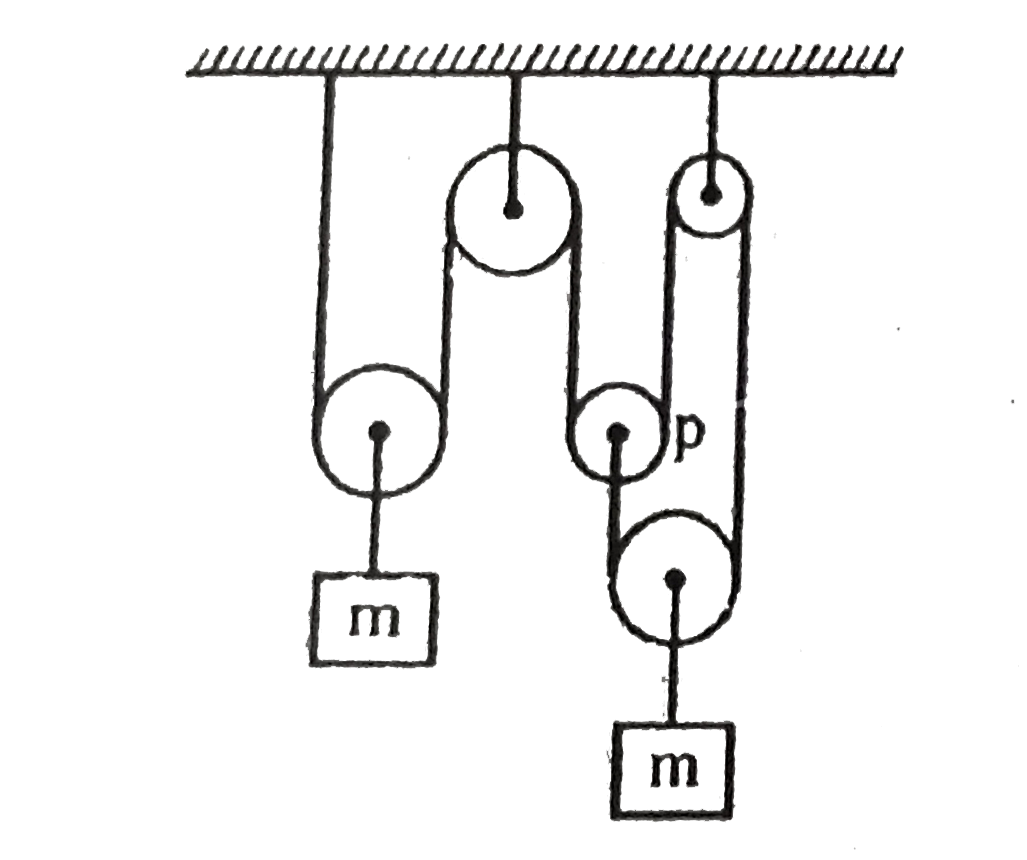
View SolutionThe strings are inextensible and light: the pulleys are smooth and light. Find the acceleration of each block and tensions in the strings.
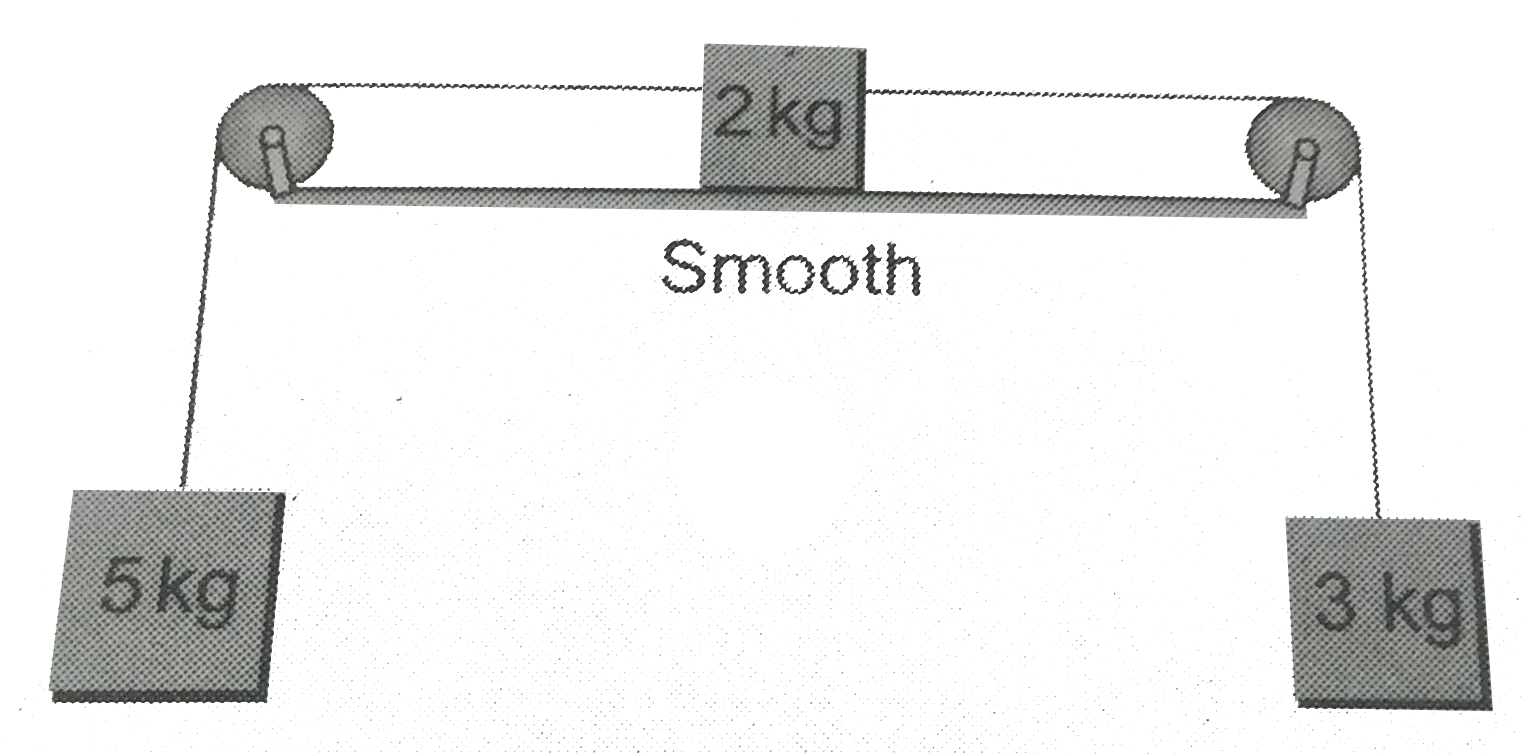
View SolutionThe strings are inextensible and light: the pulleys are smooth and light. Find the acceleration of each block and tensions in the strings.

View SolutionWhat is the mechanical advantage of single fixed pulley:-
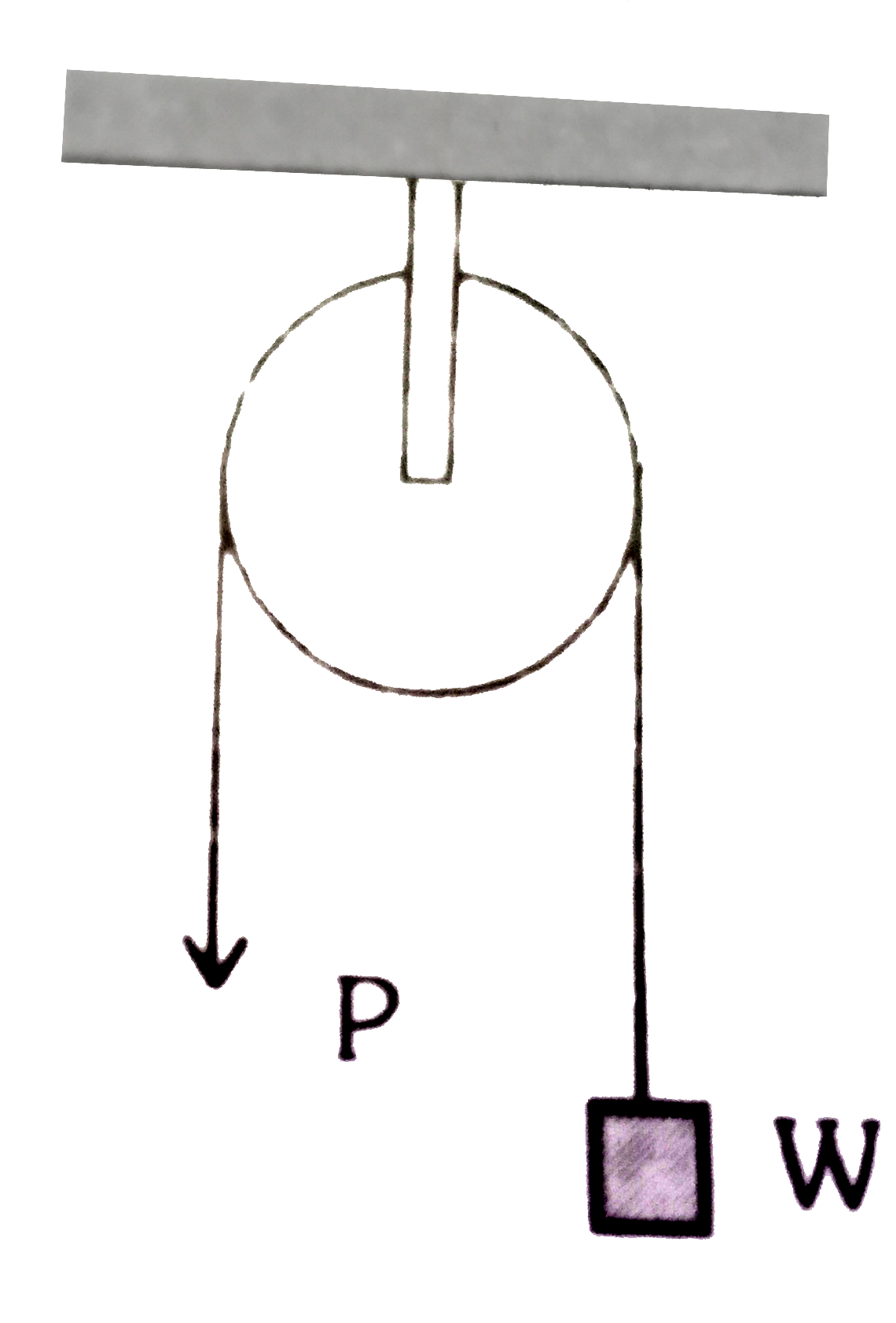
View SolutionConsider4 the situation shown in figure. Bothe the pulleys and the string are light and all the surfaces are friction less. a. Find the acceleration of the mass M. b. Find the tension in the string c. Calculate the force exerted by the clamp on the pulley A in the figure.
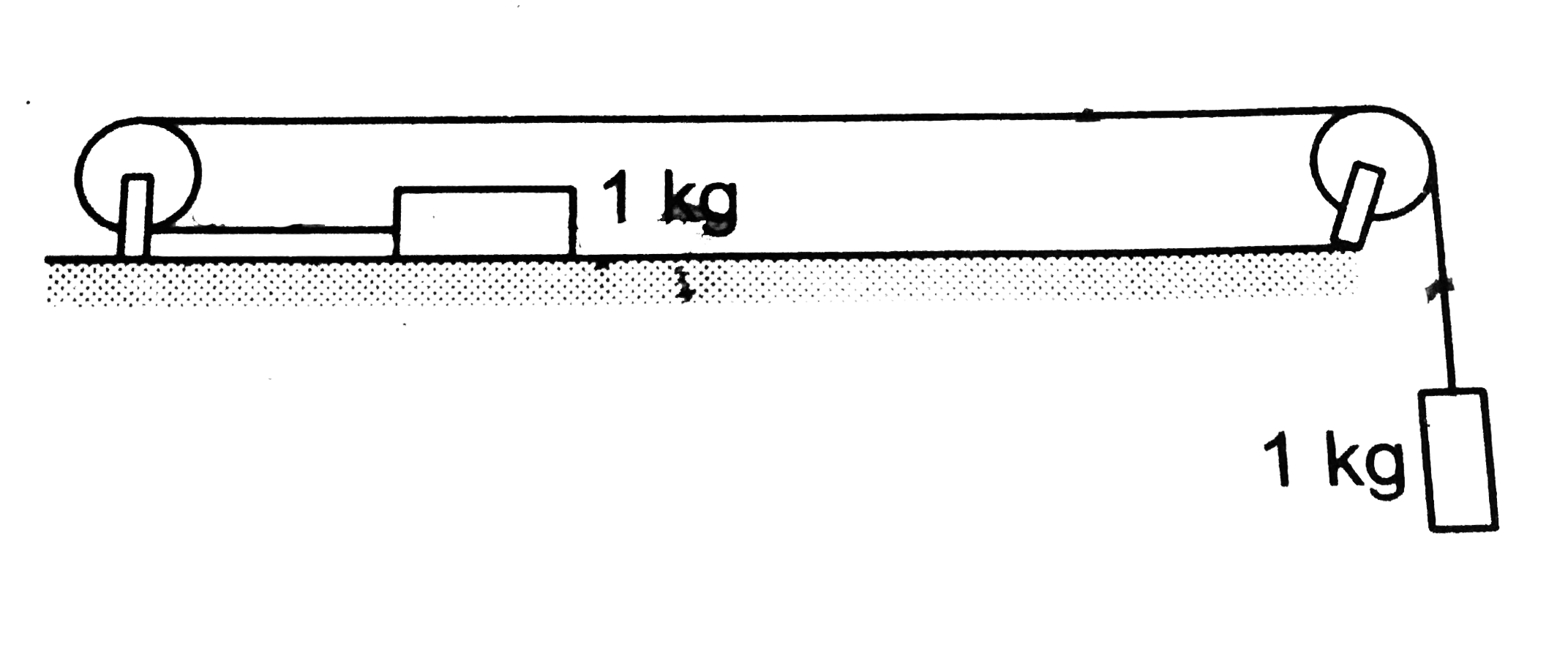
View Solution
